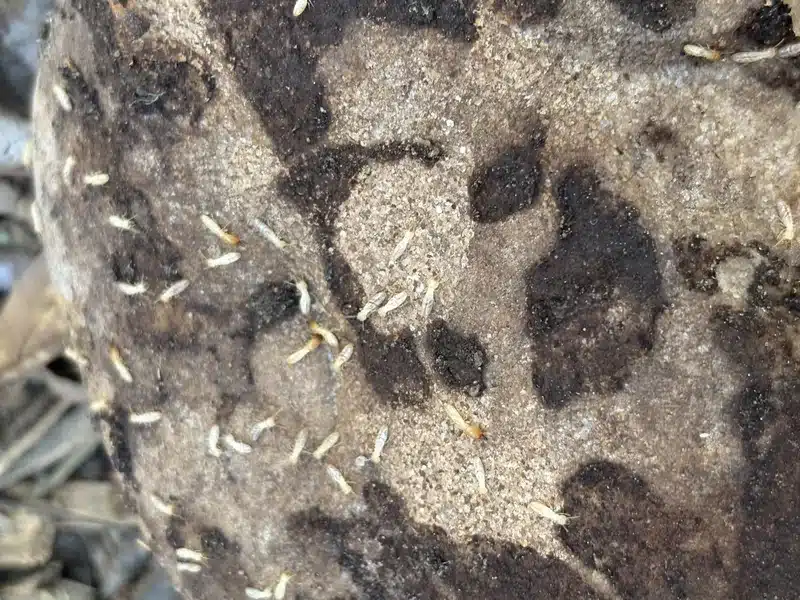Finding small, sand-like pellets around your home can be alarming, especially when you are not sure what they are. If you have discovered tiny hexagonal pellets that look like coarse sand, you might be looking at termite pellets - a telltale sign of drywood termite activity. These pellets, also called frass, are one of the most reliable indicators that drywood termites are actively feeding inside your wooden structures.
During my training years ago, I accompanied a team to a home in Alexandria where the homeowner noticed a small bulge in their window sill. When we investigated, we found distinctive termite pellets accumulating beneath tiny holes along the sill and in the crawl space. This was my first up-close look at drywood termite frass, and it taught me how these small clues can reveal major infestations hiding inside walls.
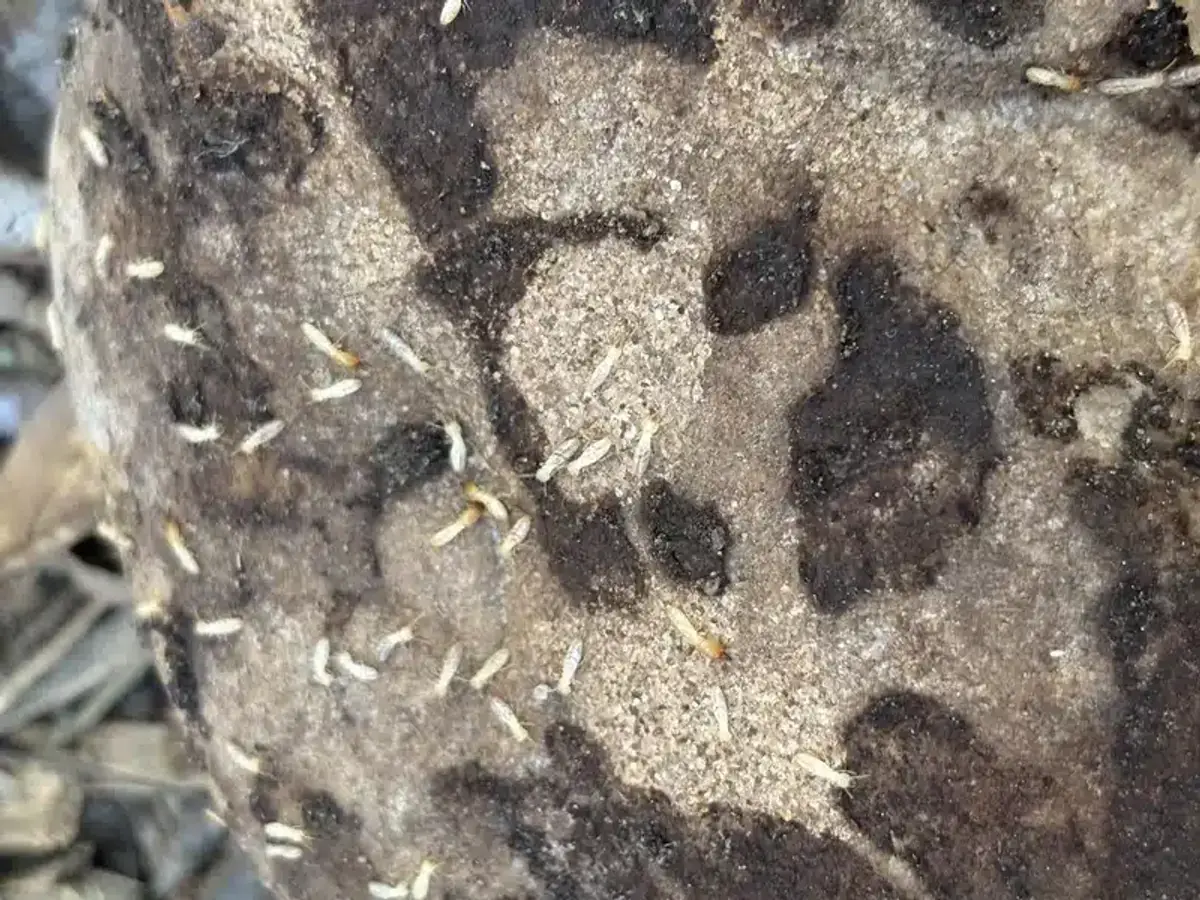
What Are Drywood Termite Pellets?
Drywood termite pellets are the waste products that drywood termites create as they digest wood. Unlike subterranean termites that live in soil, drywood termites spend their entire lives inside relatively dry wood. Their digestive system has evolved to extract nearly every drop of water from their waste, creating hard, distinctive pellets.
According to the University of Florida IFAS Extension, drywood termites have three pairs of specialized rectal glands that squeeze water out of their waste. This process creates the signature barrel-shaped pellets that are a dead giveaway for drywood termite activity.
These pellets are not just random debris - they’re a direct result of active feeding. When you find fresh termite pellets, it means termites are currently eating the wood structure above where the pellets accumulated.
Identifying Termite Pellets: Size, Shape, and Appearance
Drywood termite pellets have very specific characteristics that make them easy to identify once you know what to look for. Each pellet is approximately 1 millimeter long - roughly the size of coarse sand grains.
The most distinctive feature is their shape. Termite pellets are elongated capsules with six concave sides, creating a hexagonal cross-section. The ends are rounded, giving them a barrel-like appearance. This six-sided shape is diagnostic and helps distinguish them from other pest droppings.

When I examine termite pellets during inspections, I always point out the hexagonal ridges to homeowners. These ridges run lengthwise along each pellet and are visible even without magnification. It’s this unique shape that immediately tells me we’re dealing with drywood termites rather than other wood-destroying pests.
Texture and Consistency
Fresh termite pellets are hard and dry to the touch. They don’t crumble easily like sawdust or powder. When you roll them between your fingers, they maintain their shape and feel solid. This hardness comes from the water extraction process that occurs in the termite’s digestive system.
The pellets often accumulate in small piles that look remarkably like someone sprinkled coarse sand in your home. In fact, many homeowners initially mistake termite pellets for sand tracked in from outdoors.
Color Variations in Termite Pellets
The color of termite pellets varies significantly and depends primarily on the type of wood the termites are eating. Colors range from cream and light tan to dark brown and nearly black. This variation occurs because the pellets take on the pigment of the wood being consumed.
During that Alexandria inspection I mentioned earlier, we found termite pellets ranging from cream to dark brown in the same pile. This “salt-and-pepper” appearance is common because termites often feed on different growth rings within the same piece of wood, each with varying lignin content.
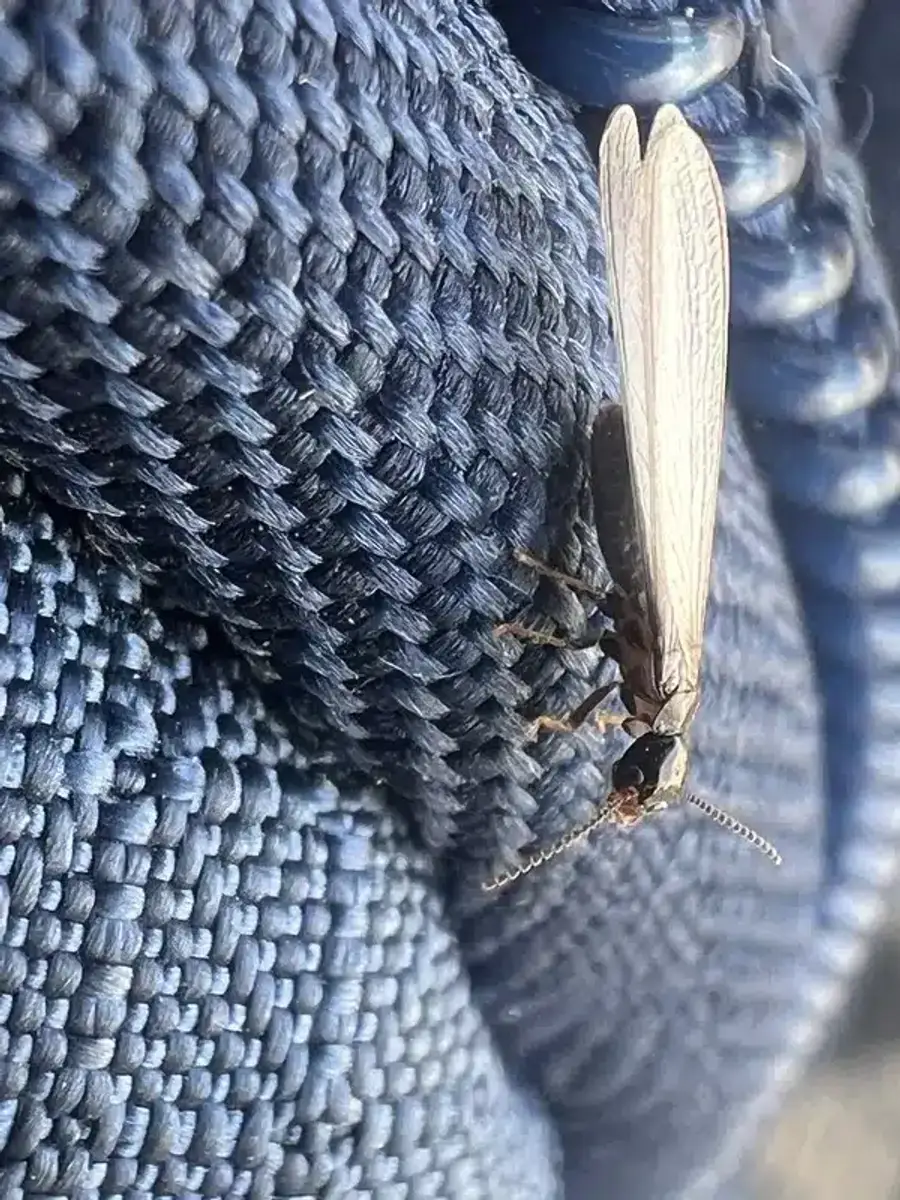
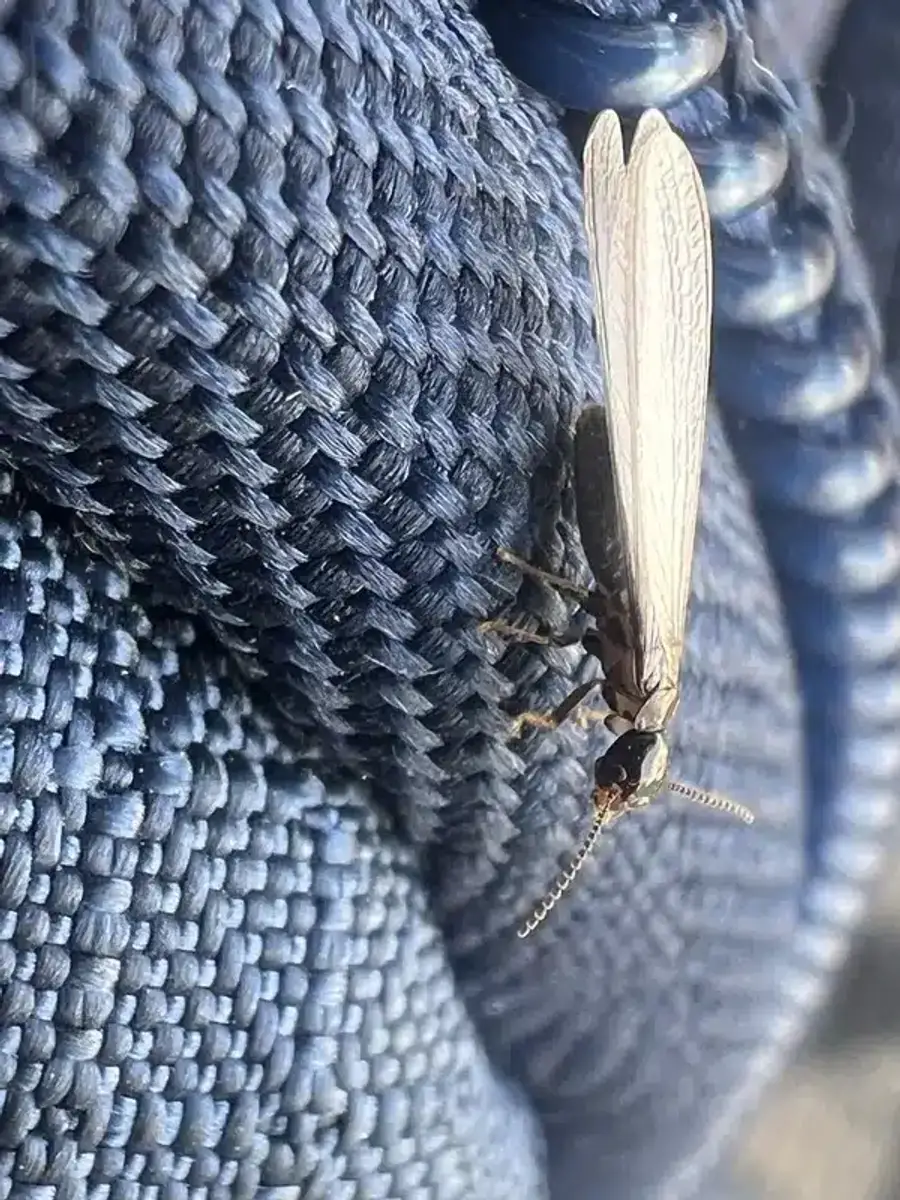
Importantly, color doesn’t indicate the age of the termite pellets or how long the infestation has been active. A common misconception is that darker pellets are older, but this isn’t true. The Clemson Cooperative Extension confirms that color derives from wood pigment, not pellet age.
Why Drywood Termites Create Kick-Out Holes
Drywood termites don’t just leave termite pellets scattered randomly throughout their galleries. Instead, they actively push the pellets out through small openings called kick-out holes. These holes are typically 1-2 millimeters in diameter - just large enough for the pellets to pass through.
The termites create these holes periodically to clean out their living spaces. After pushing out accumulated pellets, they often reseal the holes with a thin plug or position a soldier termite’s head to block the opening. This behavior helps maintain the controlled environment inside their galleries.
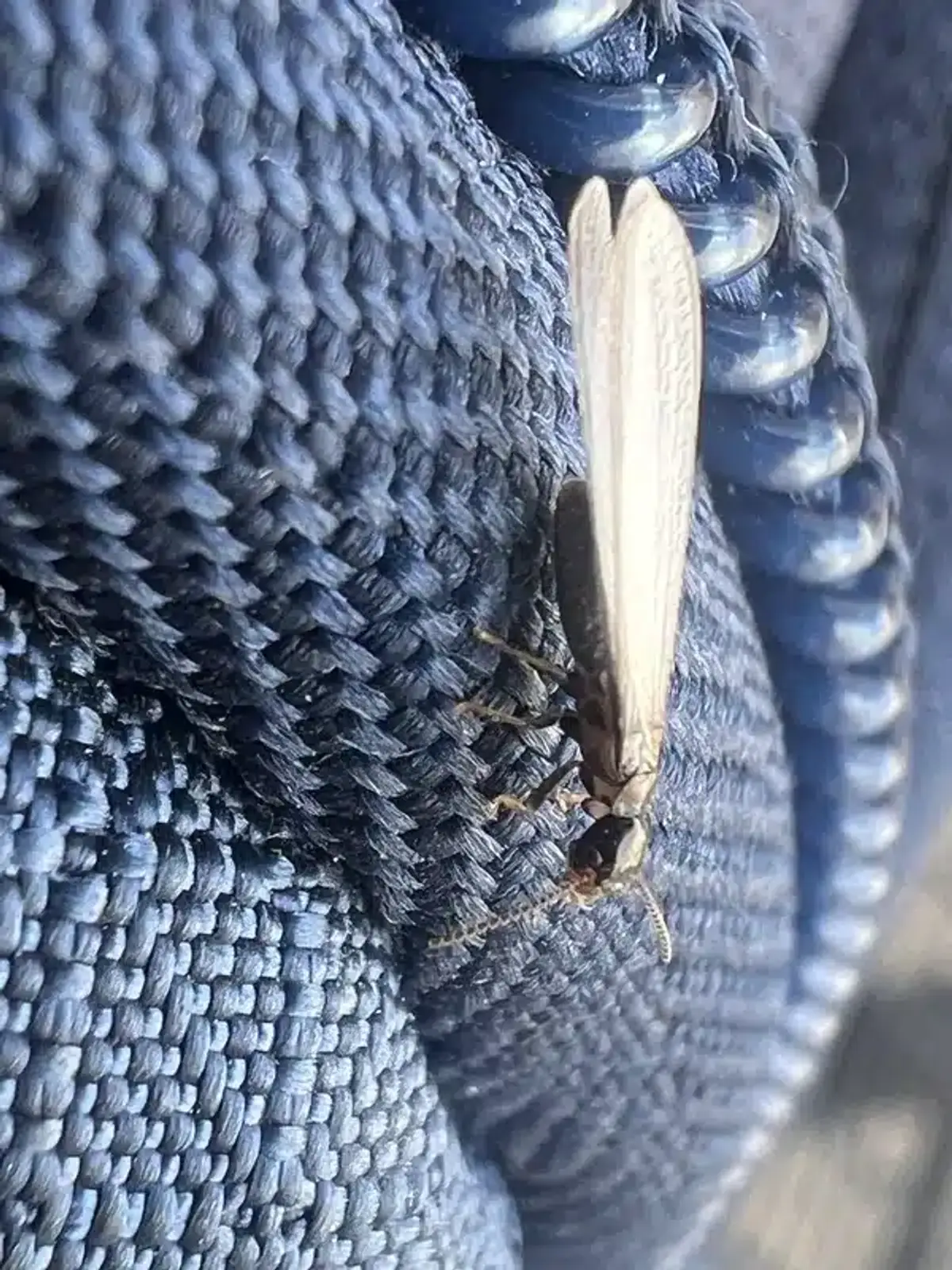
The location and pattern of termite pellets below these holes tells a story. Holes higher up create wider scatter patterns as pellets fall and bounce. Lower holes typically create neat, cone-shaped piles directly below the opening. Understanding this helps me pinpoint exactly where termites are active within a structure.
Differentiating Termite Pellets from Other Pest Droppings
Many homeowners confuse termite pellets with debris from other wood-destroying pests. However, each type of pest creates distinctly different waste products. Knowing these differences can help you identify what you’re dealing with.
Carpenter Ant Sawdust vs Termite Pellets
Carpenter ant debris consists of irregular wood chips and sawdust-like material. Unlike the uniform hexagonal shape of termite pellets, carpenter ant debris varies in size and shape. You’ll often find insect body parts mixed in with carpenter ant sawdust, which never occurs with termite pellets.
Powder Post Beetle Frass
Powder post beetles create a flour-like powder that’s much finer than termite pellets. This powder typically packs into the beetle galleries rather than being expelled in discrete pellets. The consistency is completely different from the hard, individual pellets that drywood termites produce.
Dampwood Termite Pellets
While dampwood termites also create pellets, theirs are football-shaped and lack the distinctive six longitudinal ridges of drywood termite pellets. According to the UC Integrated Pest Management guide, this shape difference is a reliable way to distinguish between the two termite types.
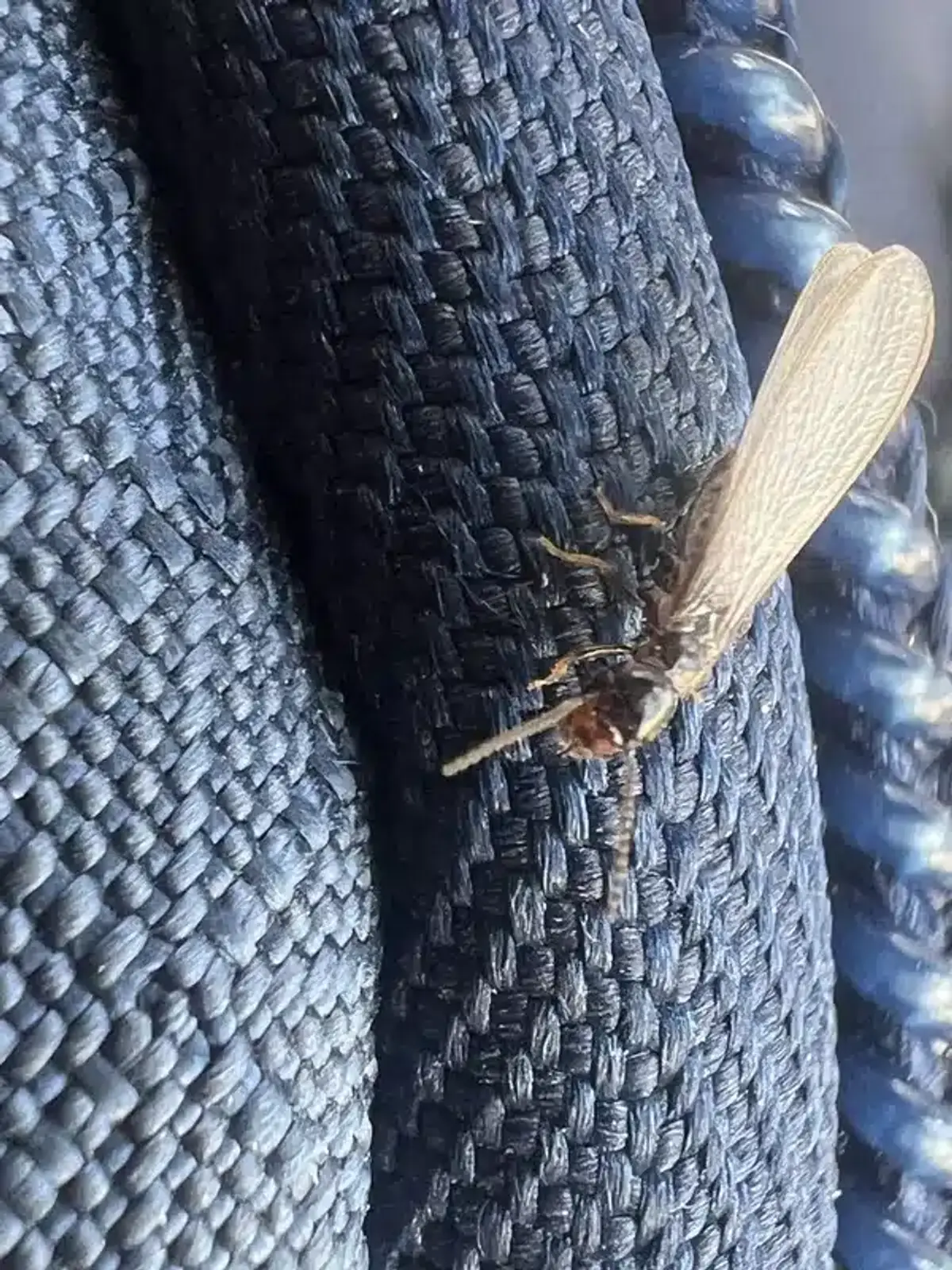
Reading Termite Pellet Piles: Location and Quantity
The location where you find termite pellets acts like a map pointing to active termite galleries. Pellets typically accumulate beneath infested wooden structures such as ceiling joists, attic rafters, window sills, door frames, and furniture joints.
In my experience helping over 100 customers with termite issues, I’ve learned that pellet location is often the best clue for targeting treatment. The termites are almost always feeding directly above where the pellets accumulate. This makes treatment much more precise and effective.
What Pellet Quantity Tells You
The amount of termite pellets you find can provide insights into the infestation, but it’s not a perfect measure. Larger piles might indicate either a long-standing colony or multiple colonies in the same area. However, the relationship isn’t linear - even slow-feeding colonies can create substantial piles over several years.
Mature drywood colonies typically contain a few hundred to a few thousand individuals - much smaller than subterranean termite colonies. More termite pellets generally suggest either extended feeding time or multiple colonies, but colony size estimation requires professional assessment.
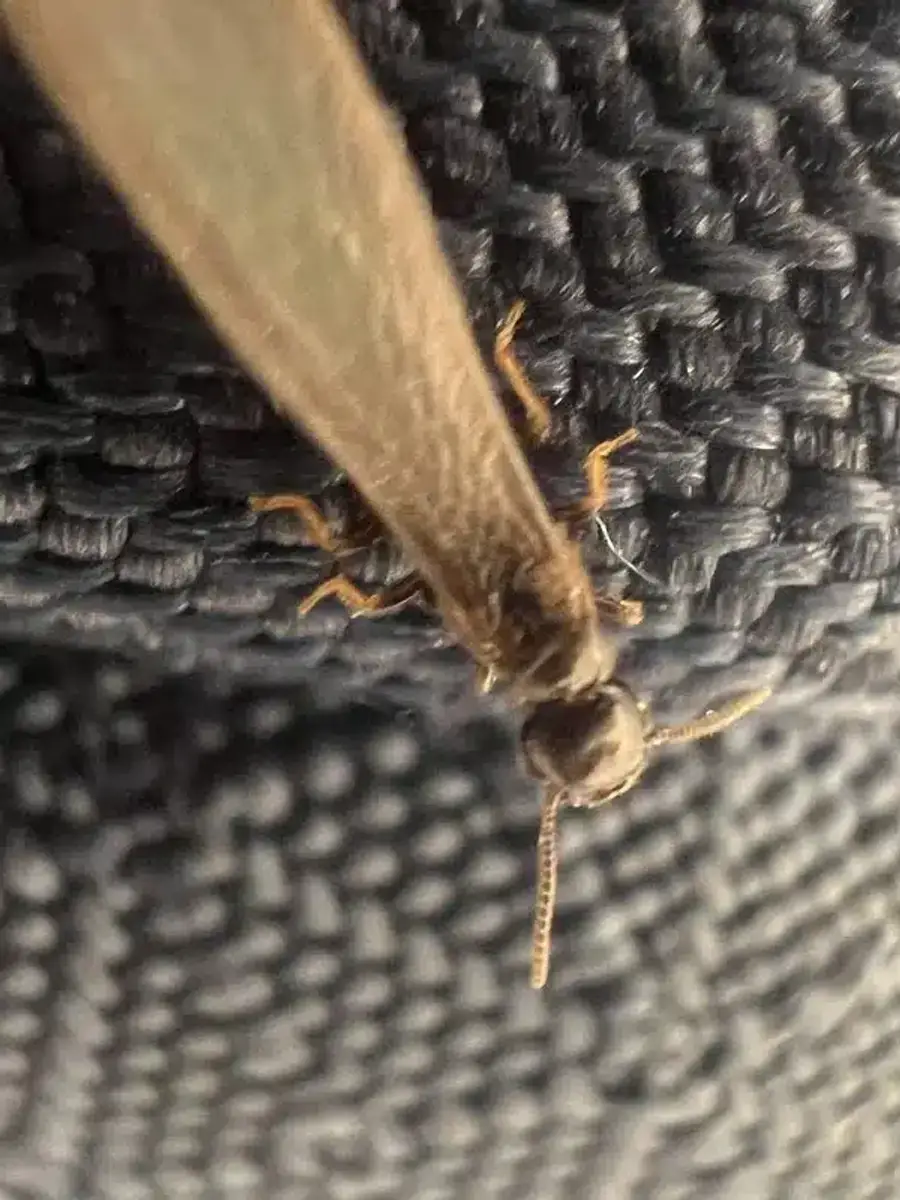
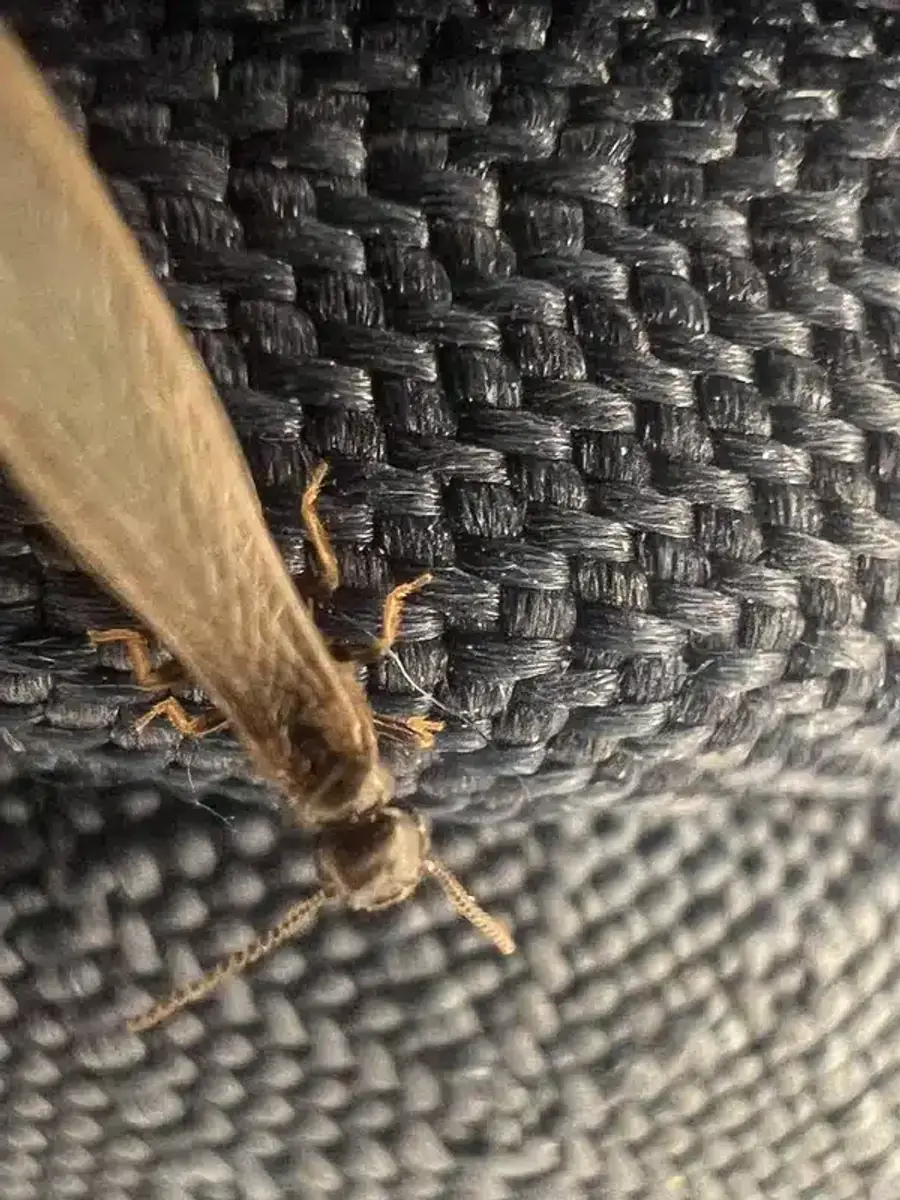
Fresh vs Old Termite Pellets: Testing for Active Infestations
One of the most important questions homeowners ask is whether the termite pellets they’ve found indicate current activity. Unfortunately, you can’t determine pellet age by color or appearance. Old pellets can remain unchanged for years after termites die or abandon an area.
I always emphasize this monitoring technique to customers because it provides definitive proof of activity. Sometimes vibration from remodeling or other disturbances can shake loose old pellets, leading to false conclusions about current infestations.
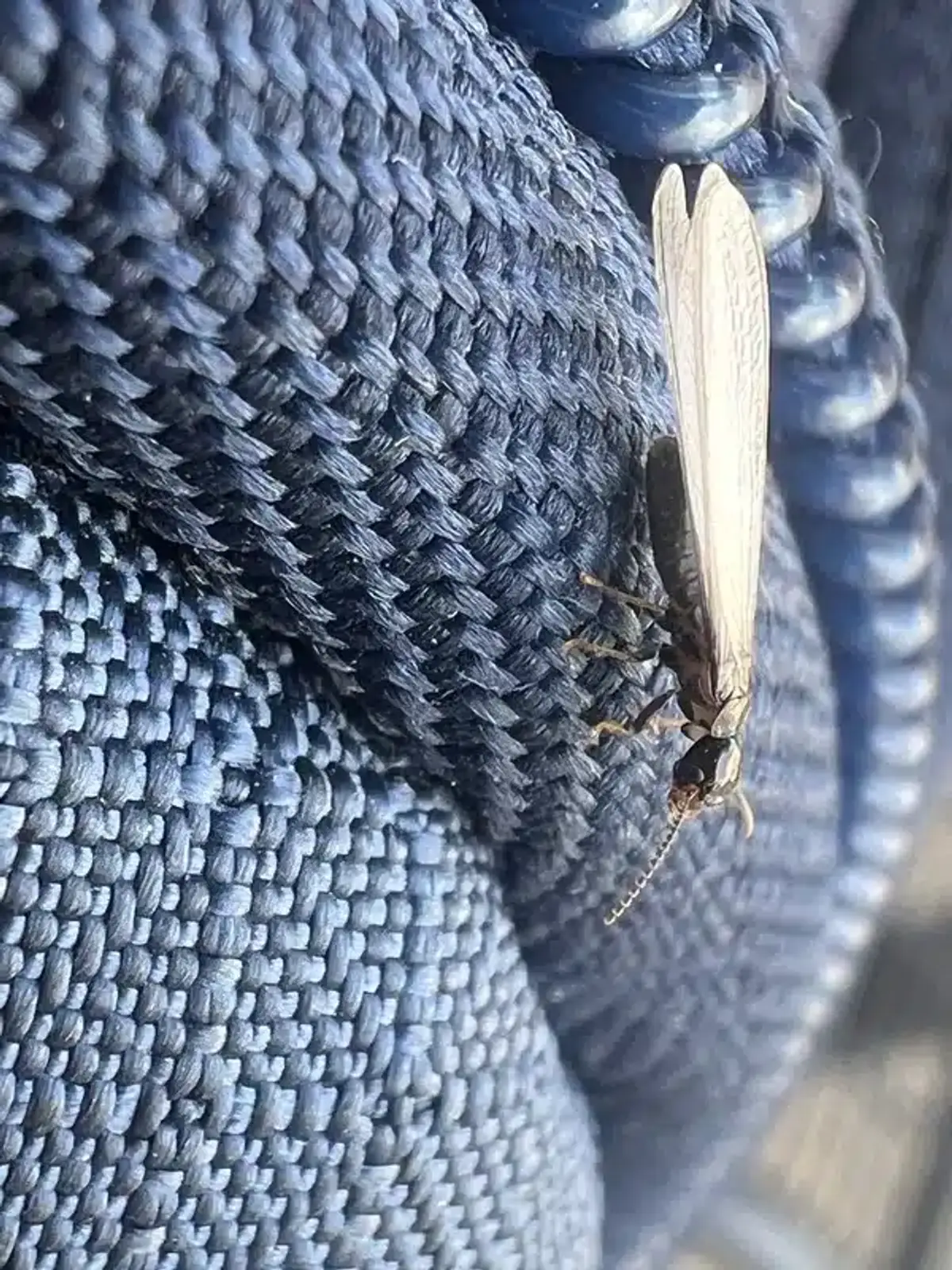
Regional Prevalence in the DMV Coastal Areas
In our coastal DMV region (DC, Maryland, Virginia), subterranean termites are much more common than drywood species. However, drywood termites do occur along the immediate coastal areas, particularly in Virginia’s tidewater region.
The dark southern drywood termite (Kalotermes approximatus) has documented populations at Cape Henry, Virginia, and other coastal sites. While these infestations are less common than in warmer climates, they’re not impossible. Climate warming may actually increase establishment odds for drywood species in our region.
Most drywood termite infestations I encounter in the DMV area are “hitchhikers” - termites that arrived in infested furniture, boats, or shipping materials. This means homeowners shouldn’t assume they’re immune to drywood termites just because they live north of traditional drywood termite territory.
Why Finding Termite Pellets Requires Immediate Action
Discovering termite pellets should trigger immediate concern and action. Drywood termites are particularly destructive because they consume wood both across and with the grain, often leaving only a paper-thin exterior shell. By the time structural damage becomes visible, extensive internal damage has already occurred.
During that early inspection in Alexandria, we discovered that termites had eaten almost completely through the window sill, leaving just the paint as an exterior barrier. The small bulge the homeowner noticed was actually the paint beginning to give way - a perfect example of how hidden drywood termite damage can be.
Additionally, once a drywood colony matures (typically after 4-5 years), it begins producing reproductive termites that can establish satellite colonies in adjacent wood. This multiplication effect can dramatically increase treatment costs and complexity if left unchecked.
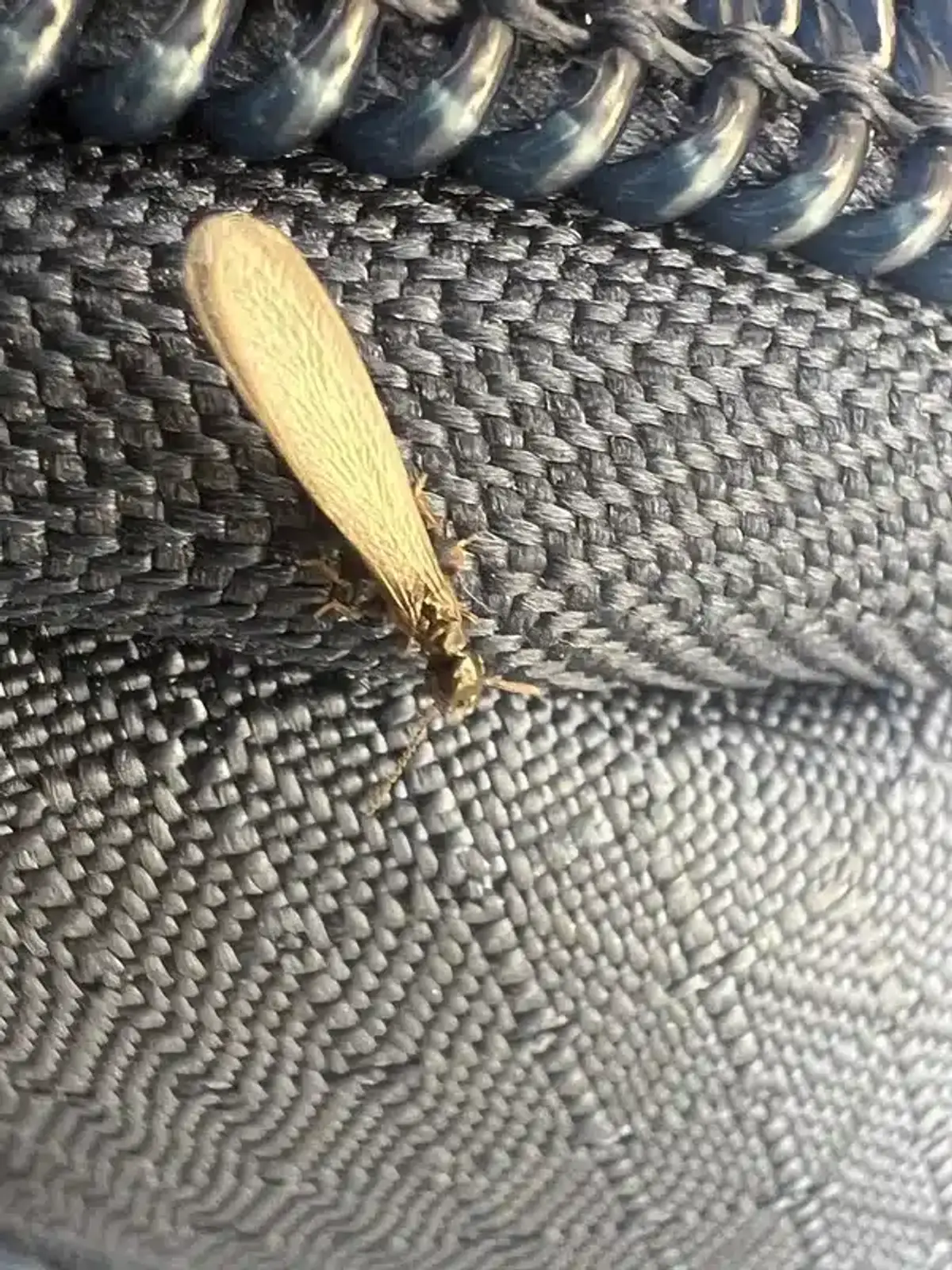
Treatment Options for Drywood Termite Infestations
When termite pellets confirm an active drywood termite infestation, several treatment approaches are available. The choice depends on the extent of the infestation, accessibility of affected areas, and the homeowner’s preferences regarding treatment methods.
Whole-Structure Treatments
For widespread infestations or when the full extent is unknown, whole-structure treatments target all potential colonies simultaneously. Fumigation with sulfuryl fluoride offers high efficacy when properly monitored but requires a 2-3 day home vacancy and provides no residual protection.
Heat treatment represents another whole-structure option that raises the core temperature of infested wood to 120°F for at least 33 minutes. This method is chemical-free but can fail in areas that don’t reach the target temperature due to “heat sink” effects.
Localized Treatment Options
When infestations are well-defined and accessible, spot treatments can effectively eliminate termite pellets and the colonies producing them. These include drilling and injecting non-repellent liquids, foams, or dusts directly into galleries.
Wood removal and replacement eliminates heavily damaged sections while ensuring complete colony elimination. Microwave and electrocution treatments are also available but depend heavily on accurate detection of colony locations.
At Better Termite & Pest Control, we’ve successfully used various treatment methods depending on each situation’s specific needs. Our approach focuses on eliminating current colonies while preventing future infestations through monitoring and exclusion techniques.
Monitoring and Prevention After Treatment
After eliminating the termites producing termite pellets, ongoing monitoring becomes crucial for long-term protection. We recommend cleaning all remaining pellets completely and establishing a quarterly inspection schedule to check for new pellet accumulations.
Prevention measures include sealing cracks and crevices that could serve as entry points, installing fine mesh screening over vents, and applying borate treatments to exposed wood surfaces. Maintaining low humidity levels in attics and crawl spaces also reduces the attractiveness of these areas to drywood termites.
For homeowners who’ve dealt with drywood termites, I always stress the importance of this follow-up monitoring. Early detection of any new activity makes treatment much more manageable and cost-effective.
Professional Inspection and Assessment
While homeowners can identify obvious termite pellets, professional inspection provides comprehensive assessment of infestation extent and treatment options. Licensed technicians know where to look for hidden kick-out holes and can distinguish between different types of wood-destroying pest evidence.
Our inspection process includes probing accessible wood, checking for mud tubes and other termite signs, and using specialized tools to detect hollow areas within wooden structures. This thorough approach ensures accurate identification and appropriate treatment recommendations.
Professional assessment becomes especially important when termite pellets are found in multiple locations or when structural damage is suspected. Our team’s 300 years of combined experience helps homeowners understand their options and make informed decisions about treatment approaches.
Conclusion
Finding termite pellets in your home signals an active drywood termite infestation that requires prompt attention. These distinctive hexagonal pellets provide valuable clues about termite location and activity levels, but they also indicate ongoing structural damage that will worsen without intervention.
The key to managing drywood termites effectively lies in quick identification, professional assessment, and appropriate treatment selection. Whether through localized treatments or whole-structure approaches, eliminating the source of termite pellets protects your property from continued damage and prevents colony expansion.
If you’ve discovered what you believe are termite pellets in your DMV-area home, our team is ready to help protect your property from further damage.
Frequently Asked Questions
How can I tell if termite pellets are fresh or old?
+
You cannot determine the age of termite pellets by their appearance or color. The only reliable method is to clean up all pellets completely and check the same area in 3-7 days. If new pellets appear, you have confirmed active termite feeding.
Are drywood termites common in the DMV area?
+
Drywood termites are less common than subterranean termites in the DMV region but do occur along coastal Virginia areas. Most infestations here result from termites arriving in infested furniture, boats, or shipping materials rather than established local populations.
What do termite pellets look like compared to ant sawdust?
+
Termite pellets are uniform, hexagonal capsules about 1mm long that look like coarse sand. Carpenter ant sawdust consists of irregular wood chips and fragments of varying sizes, often containing insect body parts mixed in with the debris.
Where do termites typically push out their pellets?
+
Termites create small kick-out holes (1-2mm diameter) to expel pellets from their galleries. Pellets commonly accumulate beneath window sills, door frames, ceiling joists, attic rafters, and furniture joints - anywhere drywood termites are actively feeding.
Do larger piles of termite pellets mean a bigger infestation?
+
Not necessarily. Larger pellet piles can indicate either a long-established colony or multiple colonies, but the relationship isn't linear. Even small colonies can create substantial piles over several years of feeding activity.
Can I treat drywood termites myself if I find pellets?
+
DIY treatments are generally ineffective for drywood termites because colonies live deep within wood structures and can be difficult to locate completely. Professional treatment ensures all colonies are eliminated and prevents reinfestation from missed termites.
What colors can termite pellets be?
+
Termite pellets range from cream and light tan to dark brown and nearly black. The color depends on the type of wood being eaten, not the age of the pellets. A single pile often shows mixed colors because termites feed on different growth rings within the same piece of wood.
How quickly should I act after finding termite pellets?
+
You should contact a professional immediately after confirming termite pellets. Drywood termites cause hidden structural damage that worsens over time, and mature colonies can produce reproductive termites that establish new colonies in adjacent wood structures.
Why do drywood termites push pellets out of their galleries?
+
Drywood termites expel pellets to keep their living spaces clean and maintain the controlled environment inside their galleries. They create small kick-out holes, push out accumulated waste, then often reseal the holes or block them with soldier termites.
With five years of hands-on experience in the pest control industry, George Schulz is a registered technician with the Virginia Pest Management Association and a proud third-generation professional in a family business that's been protecting homes for over 57 years. He manages and trains a team of service pros while also leading internal research efforts—recently spearheading a deep-dive review of thousands of documents on pest control materials to hand-pick the most kid and pet friendly, most effective solutions tailored specifically for homes in the DC metro area.
